It’s morning. The aroma of fresh Stumptown Coffee fills the air of the hotel lobby as fashionable baristas pull shots of espresso and greet their morning customers with a smile. In line for their caffeine fix are creative minds, hotel guests, suits, and the occasional Instagrammer taking a photo of their shoes over the black and white tile floor.




The round, golden tables glisten as the morning sun makes its way through the hotel restaurant’s large windows. A jazzy 1940’s tune is heard faintly amidst the lively chatter of hungry guests awaiting the most important meal of the day. Drinks of every kind leave the downstairs bar and coffee enclave—from espresso drinks, to freshly squeezed orange juice, to bloody mary concoctions.
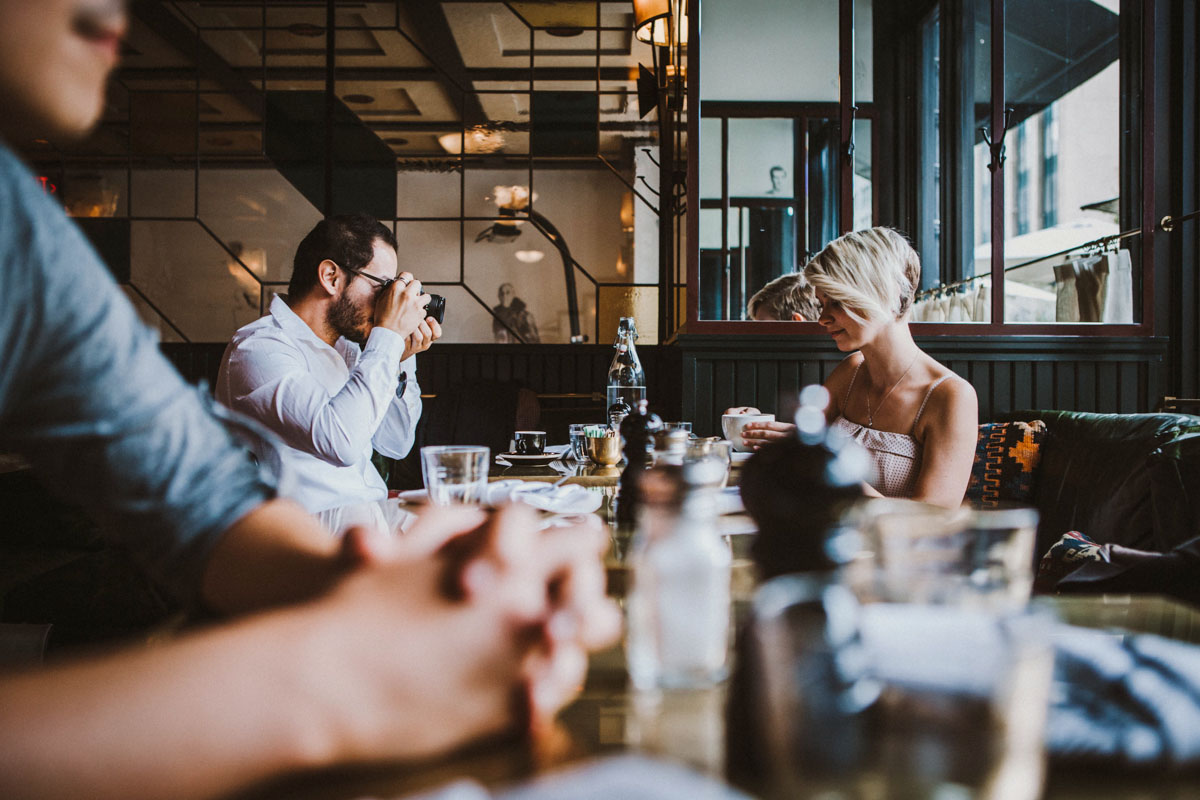
A waiter makes his way to a corner table where a gentleman and a lady are discussing film cameras, art, and the resurgence of Downtown Los Angeles. Conversation stops as the waiter sets down a plate of what looks to be heaven itself.
“Ricotta pancakes with banana, berries, and honeycomb butter,” he says with a smirk on his face, knowing full well that this plate is a clear winner.
A large scoop of perfectly round butter begins to slowly melt onto thick layers of pure gluten ecstasy. Half of a banana rests at the top of the tower while the second half is tucked between two of the fluffy pancakes. Without hesitation, the couple pull out their phones to snap a photo of what will undoubtedly rack up the likes on Instagram.
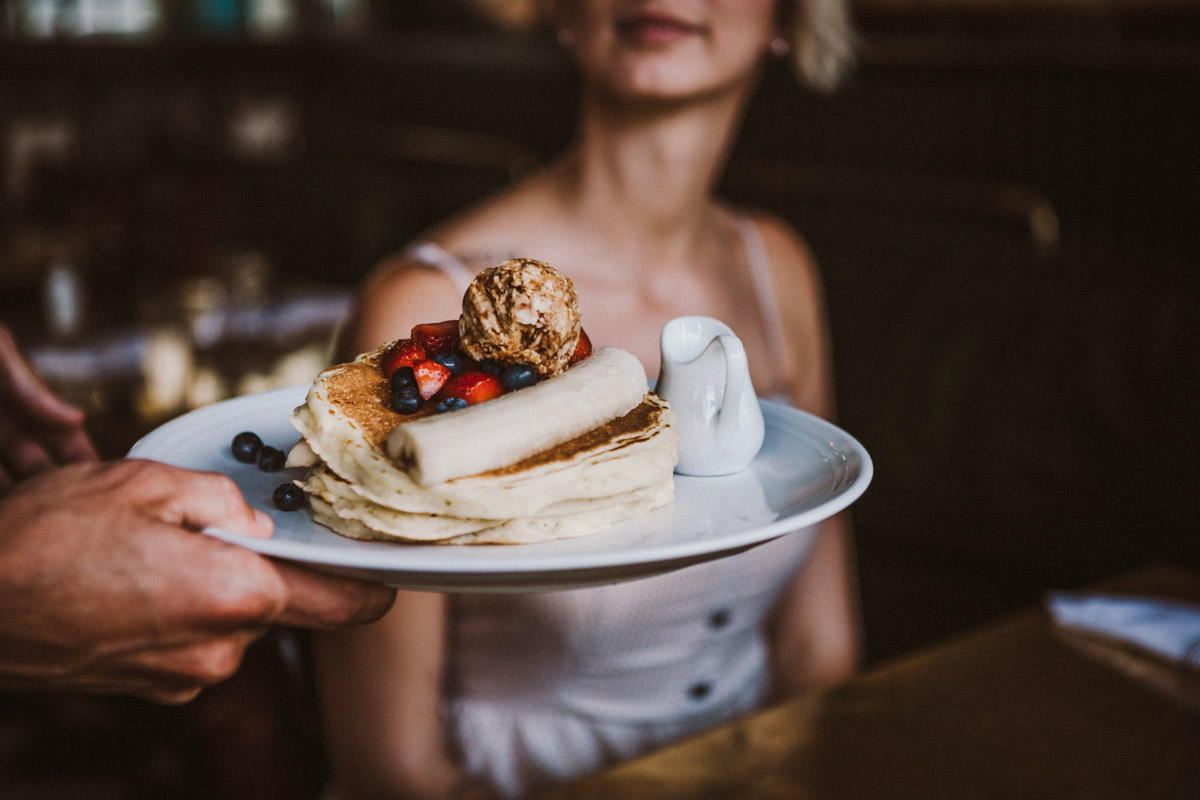
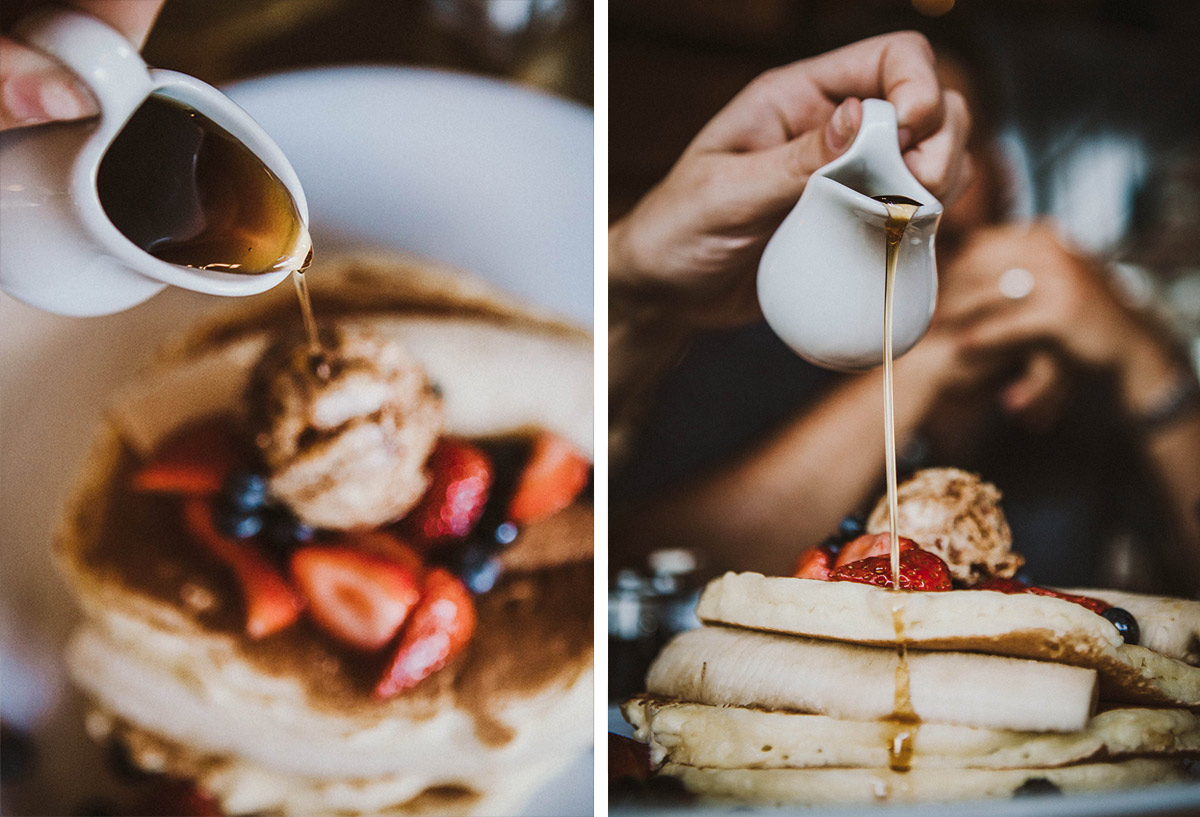

It’s midday. The restaurant begins to wind down but espresso and avocado toast continues to make its way to those in need—this time, on the mezzanine that overlooks the restaurant below. At every corner there is a detail to be marveled, whether it’s the industrial metal finish of the dedicated cocktail bar upstairs, the hand drawn caricatures of pop culture icons on the walls, or the artwork hanging on the wall of Allen Ginsberg over the dark, wooden panels.

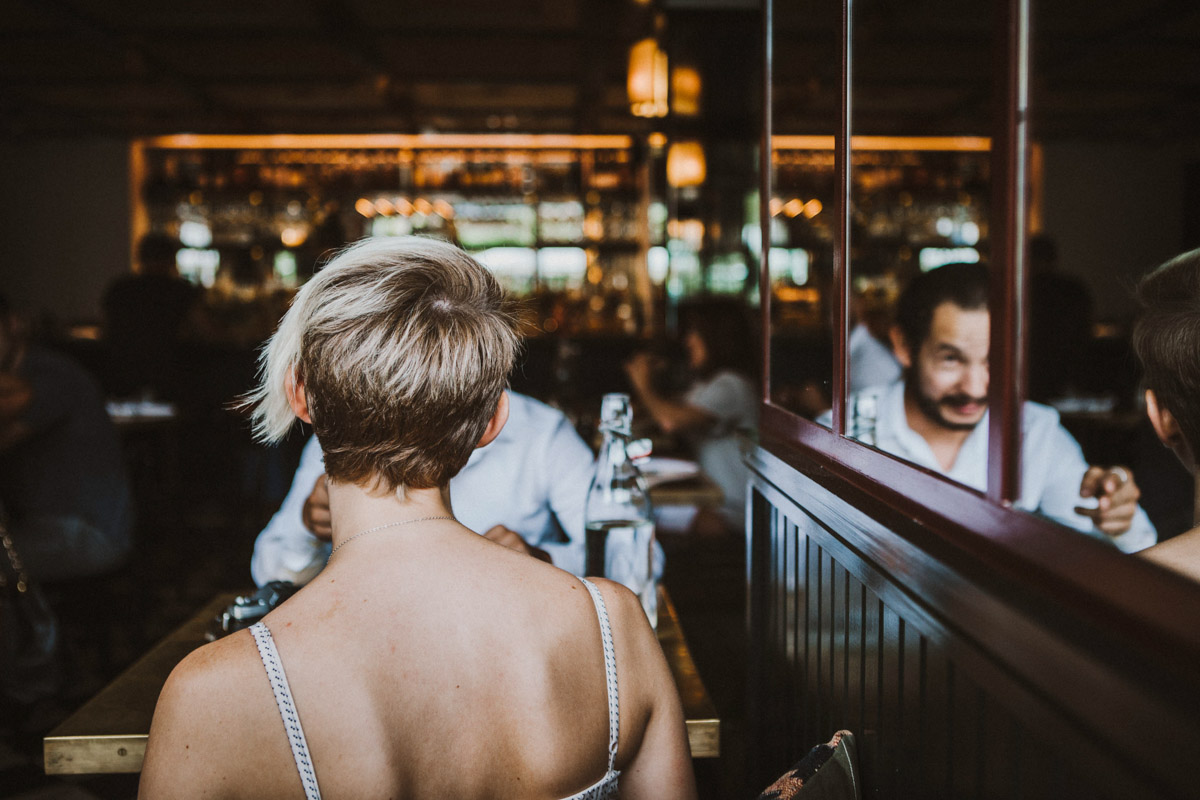
It’s evening. A man sits at the downstairs bar resting below the mezzanine accompanied only by his thoughts. His choice libation is whiskey and he can often be seen drinking an old fashioned after the sun has been put to rest, well into the night. His once crisp, white shirt let loose in anticipation of that first sip of his drink.
This is the story of LA Chapter: a restaurant, three bars (including the rooftop bar that overlooks the city), a coffeeshop, and a creative culture that begins and ends at the doorstep, all housed under Ace Hotel in Downtown Los Angeles.
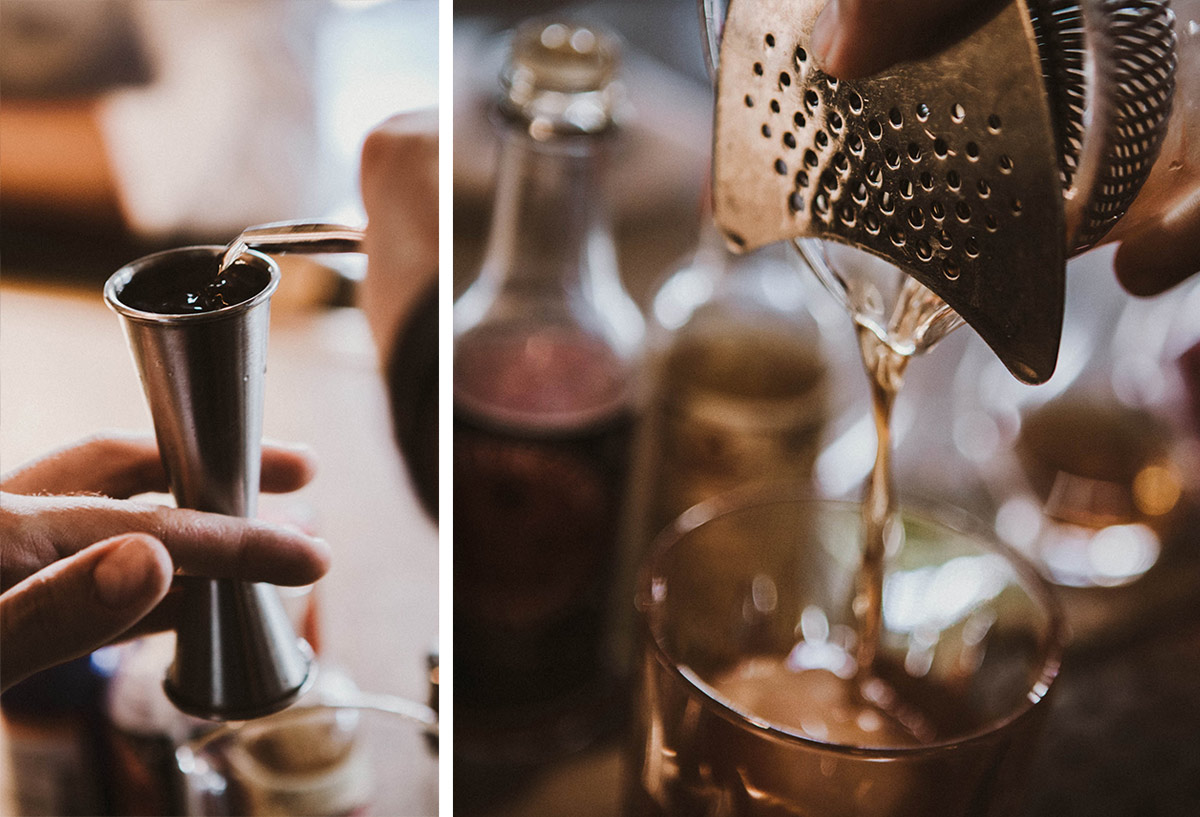
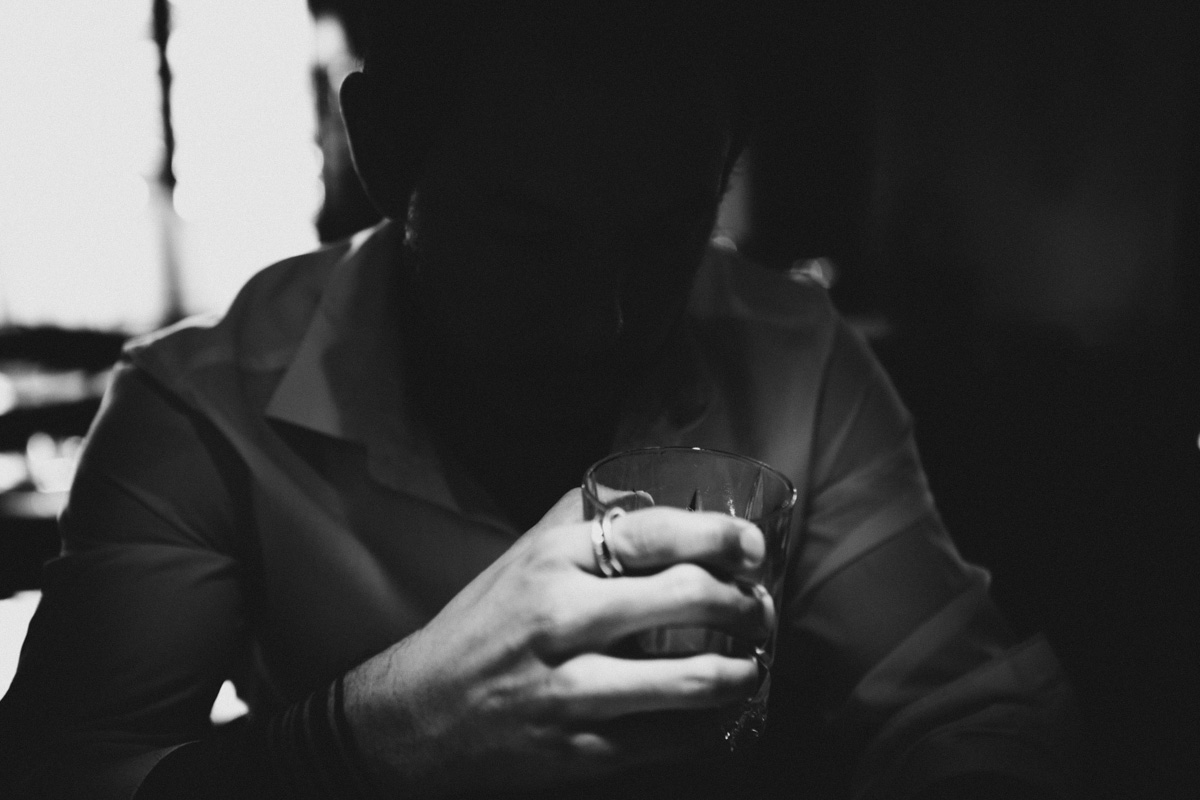
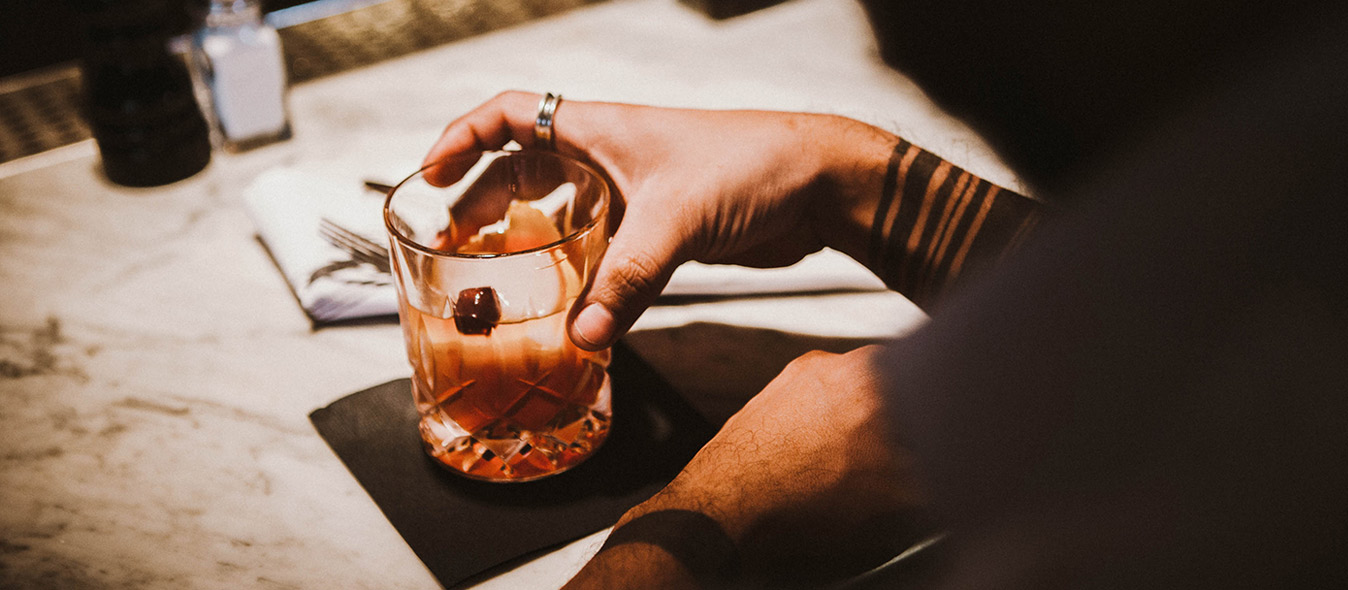
I’m standing on the mezzanine overlooking the many characters that come and go throughout the day. Many are familiar faces while others pop in for a quick drink with a friend to escape the hustle and bustle of the outside world. This place is more than just a hotel or a restaurant, it’s a canvas for community and lifestyle. In a way (in part Ace Hotel’s genius brand development), this community represents a generation of romantics that seek out the good things in life, but with style. To walk through the doors of LA Chapter, is to play a part of the overall experience that makes this place special.
Two gentlemen who recently arrived from New York make their way up the mezzanine to meet me. Ken Addington is wearing his chef whites with a monochrome, striped apron, while Jud Mongell is wearing a black t-shirt with the words “NEW YORK — CITY OF CHAMPIONS.” Both men are business partners from Brooklyn’s esteemed local gem of a restaurant, Five Leaves. Their success and general knack for curating an experience filled with food and drinks have led them to partner and collaborate on Ace Hotel to bring LA Chapter to life.
This is their story.
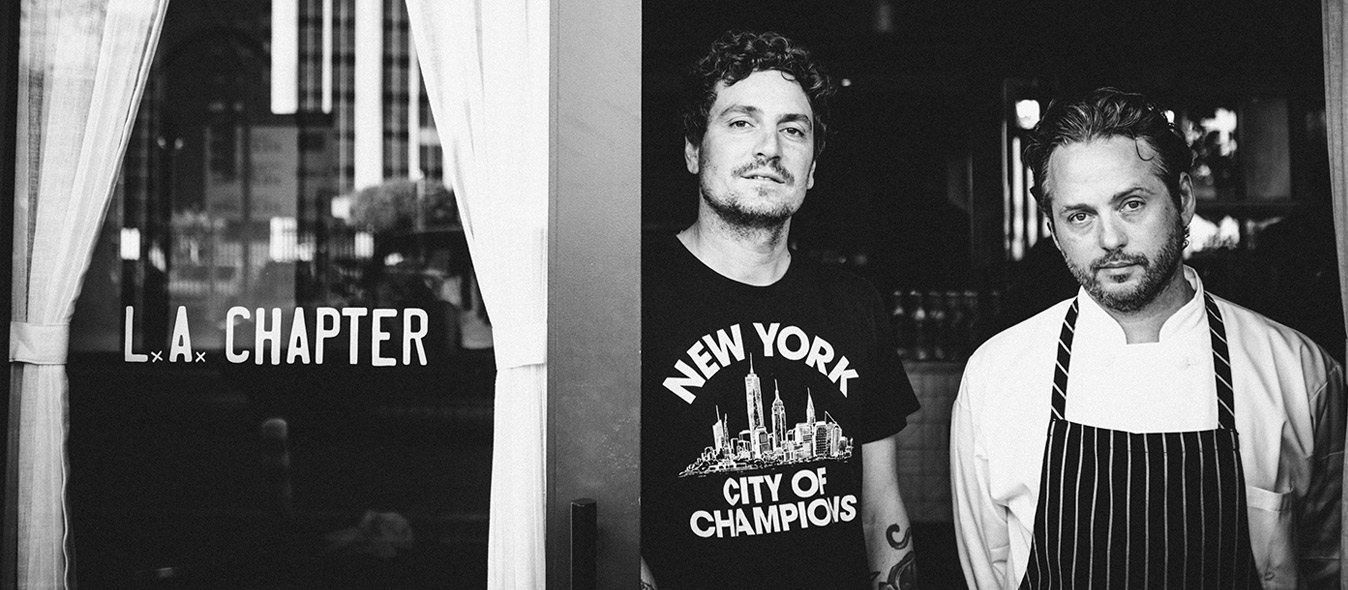
Where did each of you grow up?
Jud Mongell: I grew up in a combination of places: Cape Cod, Seattle, New Zealand, Los Angeles, and New York. So I’m kind of all over the place with some Australia and Spain thrown in there. I’m kind of like a worldwide brat. A lot of places. I’m based in New York City now.
Ken Addington: Born in the Virgin Islands, born in St. Thomas. But Brooklyn since I was little, so most of my life. It’s funny, I was thinking about this the other day. My mother used to work with the Brooklyn Chamber of Commerce when I was a kid. We thought, “What are people going to do? Take bus tours of Brooklyn?” It seemed like a ridiculous idea at the time, and now there’s a bus tour that goes by the restaurant [Five Leaves] every day. It never seemed like it had the potential to be what it is right now, which is amazing and fun, but it’s very different than what I grew up in.
How did the two of you meet?
JM: We were introduced. I said, “Get us the best chef in the world,” because we were going to die if we didn’t have someone who could cook a million meals, and we found this guy.
KA: I went through opening night [at Five Leaves], I went through a couple days with these guys helping out, and it just gelled. I come from a fine-dining background, and I was really enjoying the vibe and community we were in. It was not obvious when it opened that it would be exactly what it is now. It was a very local community—artistic, creative, fun, good-looking people who were there to enjoy the offering. It was a really special place right away; it was beautifully put-together.
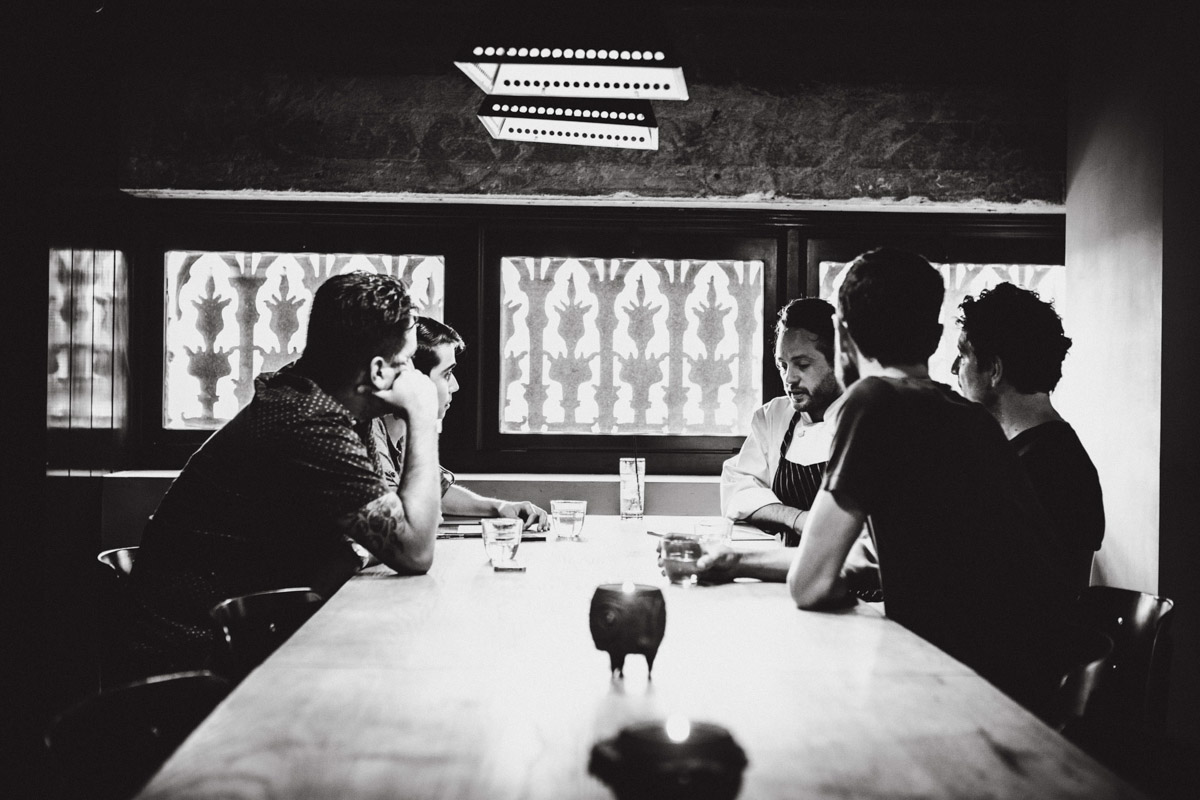
So you’re running a successful restaurant in Brooklyn, and then you get the call from Ace Hotel. How did that opportunity come about?
JM: That was sort of the same thing; it was like a magical situation. We had the call from Ace Hotel and we were brought down to check out the neighborhood and see what we could add to Downtown. This was two-plus years ago. So there was not a lot going on down here. I met with Alex Calderwood [Founder of Ace Hotel, RIP] and we went through the entire building, which at the time was still in its original state. He and I discussed design, things we like about restaurants, building materials and that sort of stuff.
He sort of egged me on. He said, “Do something in this neighborhood, we could really work well together. You should do something across the street or down the road.” We all went out for drinks and I went back to my hotel room and he called me up and said, “Let’s just work together.” It was just two guys getting together because we had similar ideas and then jumping into it. It was built on a handshake, basically.
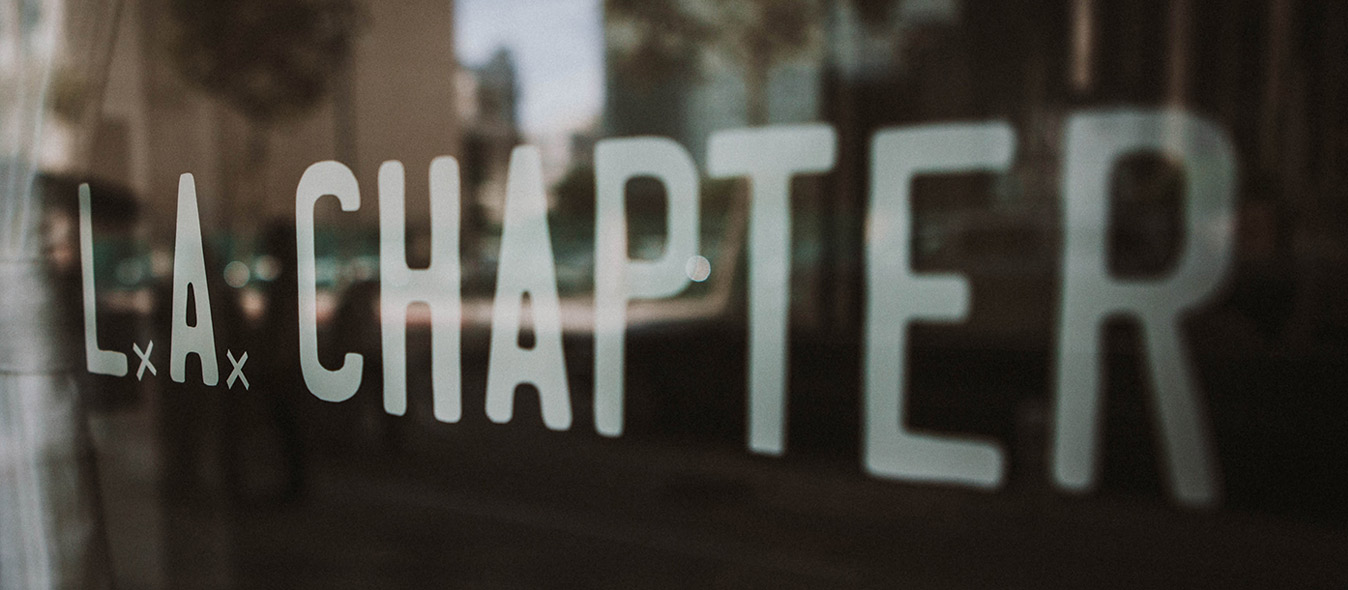
Considering that you were a part of Brooklyn and seeing the transformation there, did you feel the same thing happening here in Downtown LA?
KA: It was a funny thing. When I first came out with Jud—it was the second or third trip he’d been out—we were staying in Santa Monica, and we would go to Venice and to the beach. It was beautiful. Then we’d come down here [Downtown] and it was like the apocalypse or something. We were like, “Why don’t they just open a restaurant in Venice?” I didn’t quite get it at first, but it makes total sense now. There’s a lot of great stuff going on here, and this gets to be a focal point for it, like Five Leaves got to be a focal point for a lot of communities coming together. We’re like a meeting place—a place where people are coming and getting together. There’s a community built around this place. It’s pretty cool.
KA: We have people asking for menu items from Brooklyn. We’ve had to shift the menu around to make it less healthy for LA, somehow. And at Five Leaves, there are people who have been there every single day for six years—breakfast, lunch and dinner—the same 40 people. It’s really nice as the neighborhood changes and new things come in, to be able to hold onto that clientele. Those are the people we want to cater to. Those are the core group of people we’ve always wanted to cook for and serve. And everyone else who comes in, we want to treat them exactly the same way. We want to exceed people’s expectation in terms of friendliness and quality.
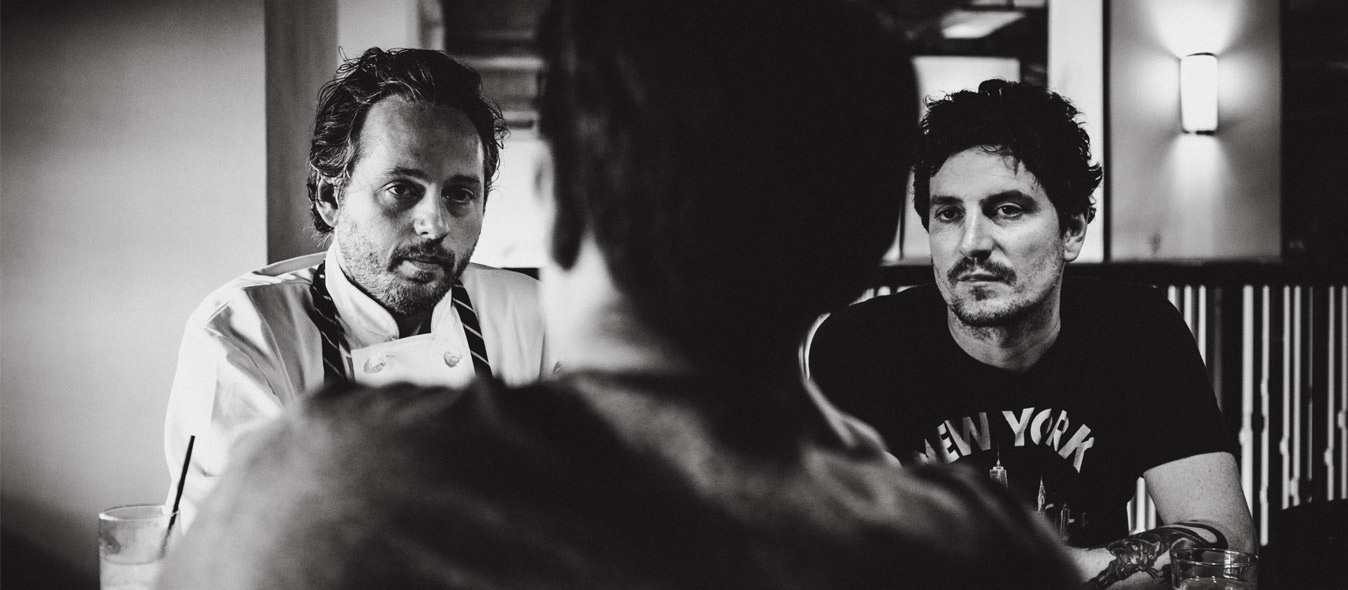
There’s something about the essence of what this place is. I know a lot of it has to do with the brand, culture, and lifestyle Ace Hotel has been able to build. But what goes into creating an experience and not just a restaurant?
KA: When they [Ace Hotel] were discussing their brand and their ideas on hospitality I was like, “Oh, that’s what we do!” We have the same goals in terms of coming to service from our own experience: what would we want to experience? How would we like to be served? Obviously we’re businessmen and we run as a business, but we want to be extra accommodating. We want to make people feel special. There are a lot of facets to that. In New York, we do it with music and the lighting and the buzz of the place. We try to recreate that here as best we can.
JM: If someone can show up and be immediately disarmed, feel really comfortable with the backdrop that’s behind them, and feel that the room that surrounds them is not only something they’re enjoying, but feels like a good backdrop for a photoshoot—with those things together it creates a good space.
I think Ace and Fives are similar like that. The space, the lighting tones, the patterns and the different colors—like they always say: red rooms make you angry and blue rooms make you calm. Having the hues and colors going on, mixed with a lovely, disarming staff makes this a great place to sit for a long time.
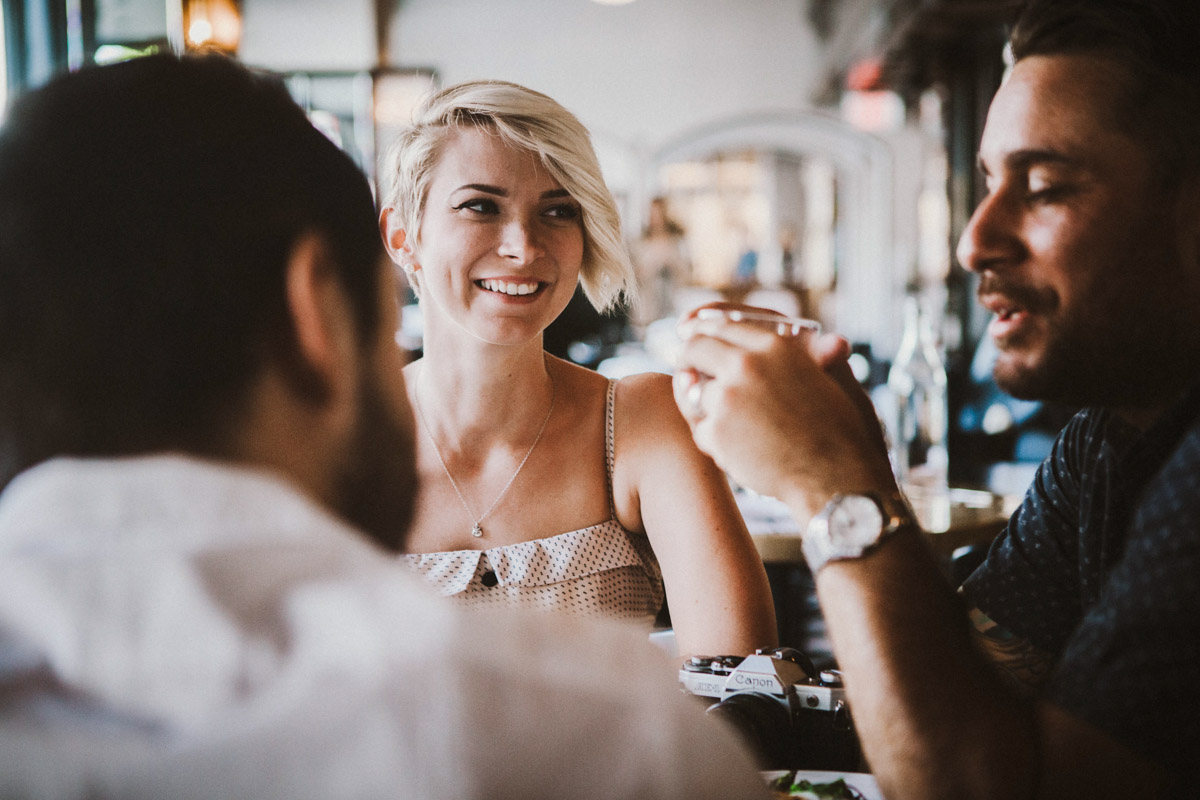
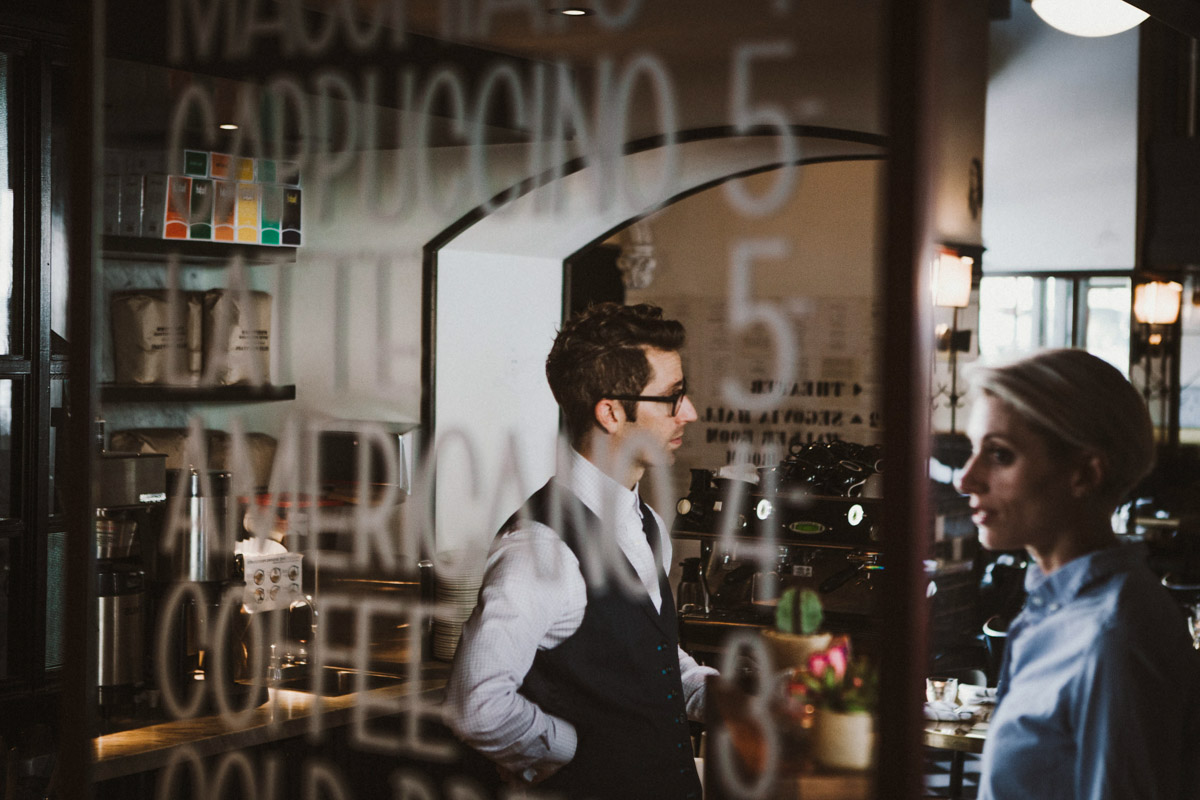
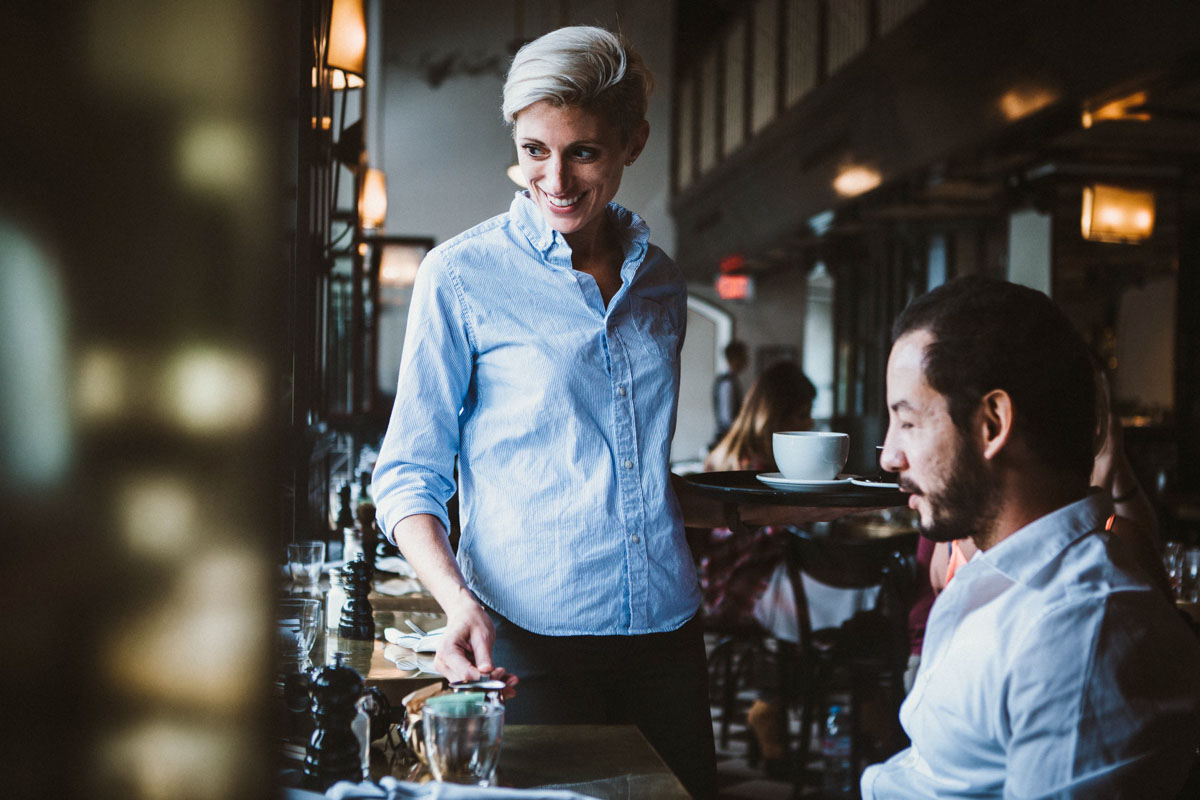
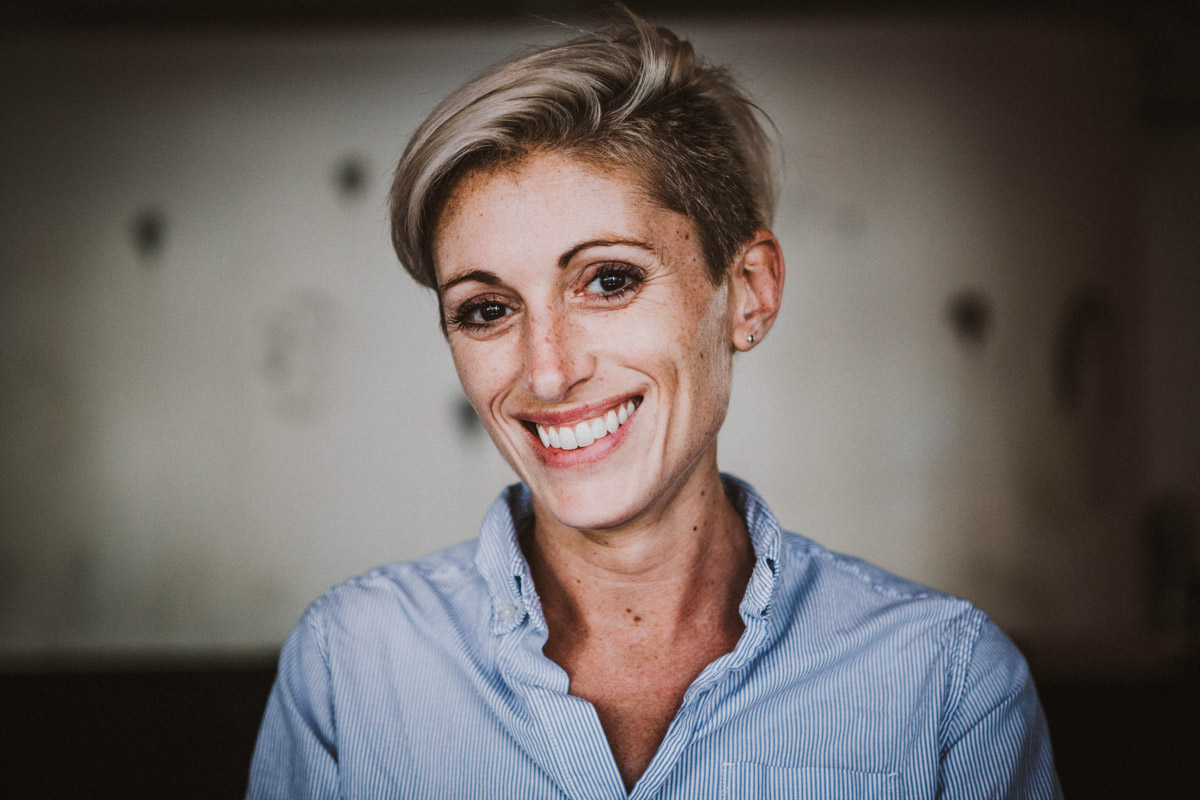
KA: Obviously we were a bit younger when Five Leaves opened. It’s interesting to get into more of a grown-up situation. I kind of think of [LA’s Ace Hotel] as a big brother to Palm Springs. It’s kind of a similar thing. It’s a slightly more grown-up institution than Palm Springs. And LA Chapter is a slightly more grown-up version of Five Leaves. Now that we’re a little bit older, we’re a little more mature. We sip our drinks instead of taking shots.
Tell me a little bit about the food. What goes into the inspiration and the influence for the menu?
KA: We do a balance. They definitely wanted a lot of the Five Leaves menu items. And that’s great because I know how to do them. So it’s easy coming out here and preparing the food. It’s California so there’s just amazing stuff around. I’ve got a talented staff I can talk to about food. We approach it from a rustic idea. It’s not exactly rustic food; it’s layered and practiced and delicious. We think of it as a plate with a lot of elements on it. We’re finding the interesting ingredients that are out here and working that into our vernacular.
That’s a lot of what we’re working on right now; we’re building the pantry. Say our tomatoes look really nice. So we have the lemon basil and cured halibut vinaigrette, so let’s put them on the tomato. Tomatoes are beautiful. It’s a simple dish we’re going to put together with a lot of fresh elements, and we just have things we can build quickly.
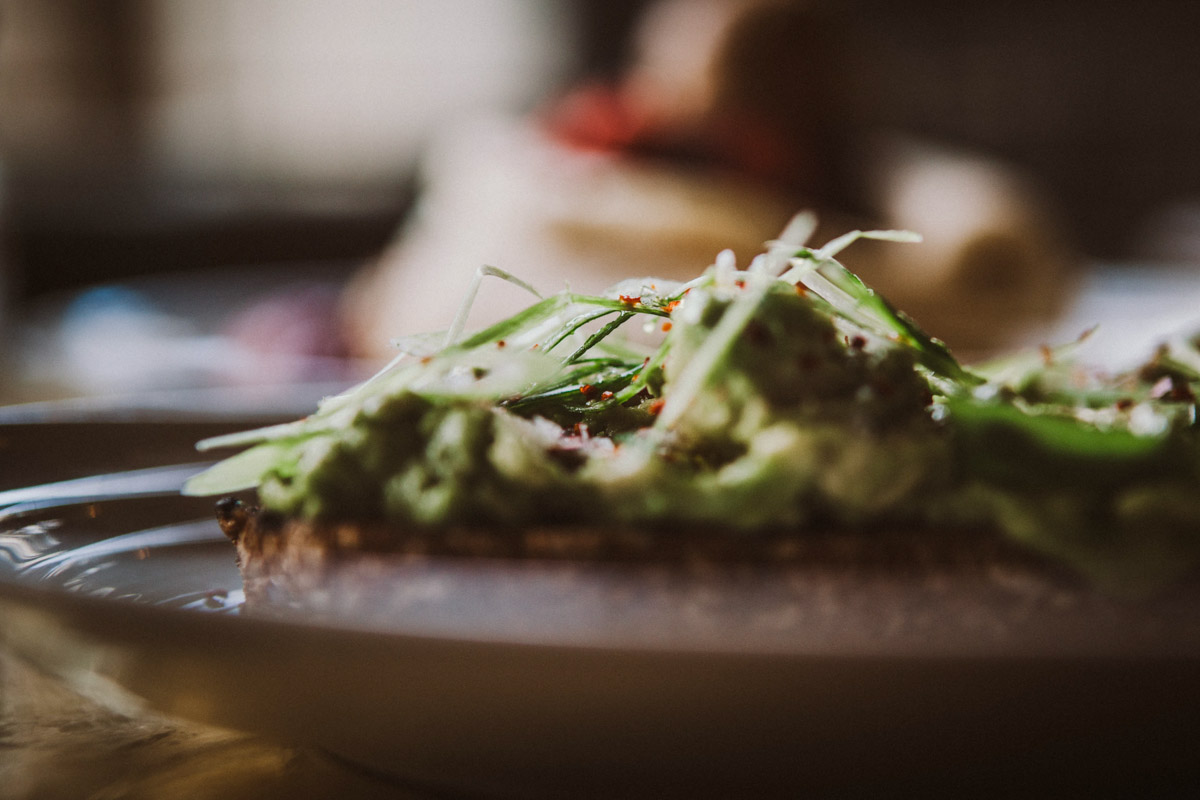

What is a detail or signature mark you’re proud of here at LA Chapter?
JM: For me, it’s that Ace believed in the same thing I believed in. That’s my favorite thing about working here. Growing up in New Zealand we had quality espresso for a lot longer than America has. We’ve been doing Stumptown-esque coffees down there for probably a good 20 years. So I was always into that, and I’ve always been into cocktails; I was a cocktail bartender for a long time. This thing we’ve been doing in New Zealand for so long is now not only happening at Five Leaves and many other restaurants, but also happening on a great, amazing scale at Ace Hotel.
KA: I would agree and expand on that. Where you always want to go is a fun place with good food, and there’s never a fun place with good food. If there are fun places, they have mediocre food. And if there are places that have great food, they aren’t fun. I feel like that’s the balance we’ve struck at Five Leaves.
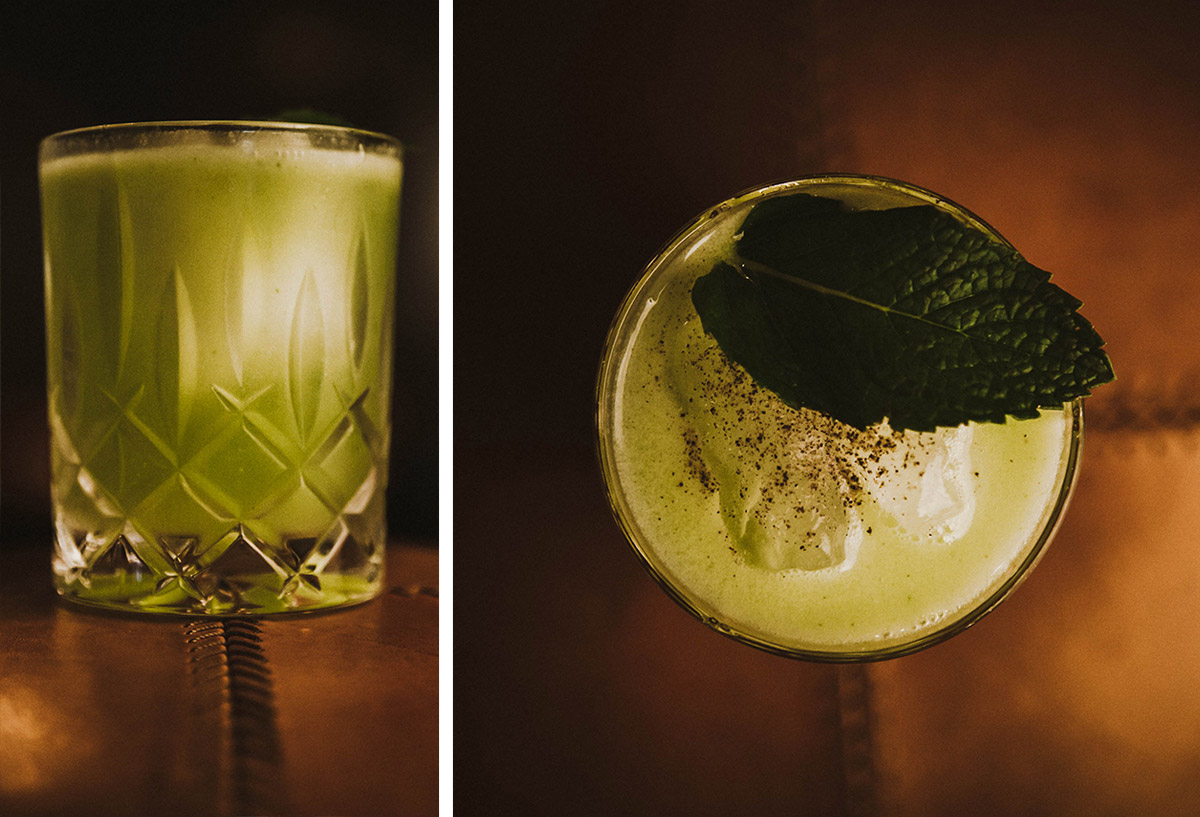
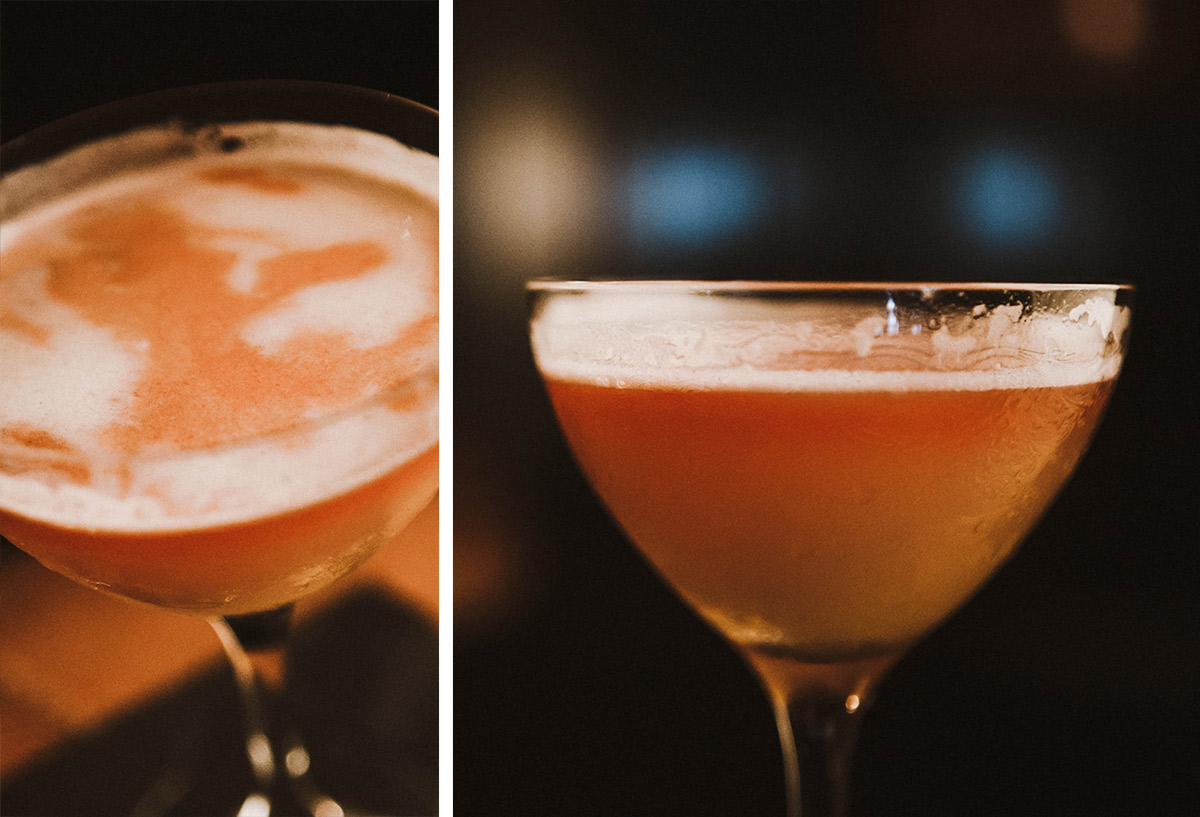
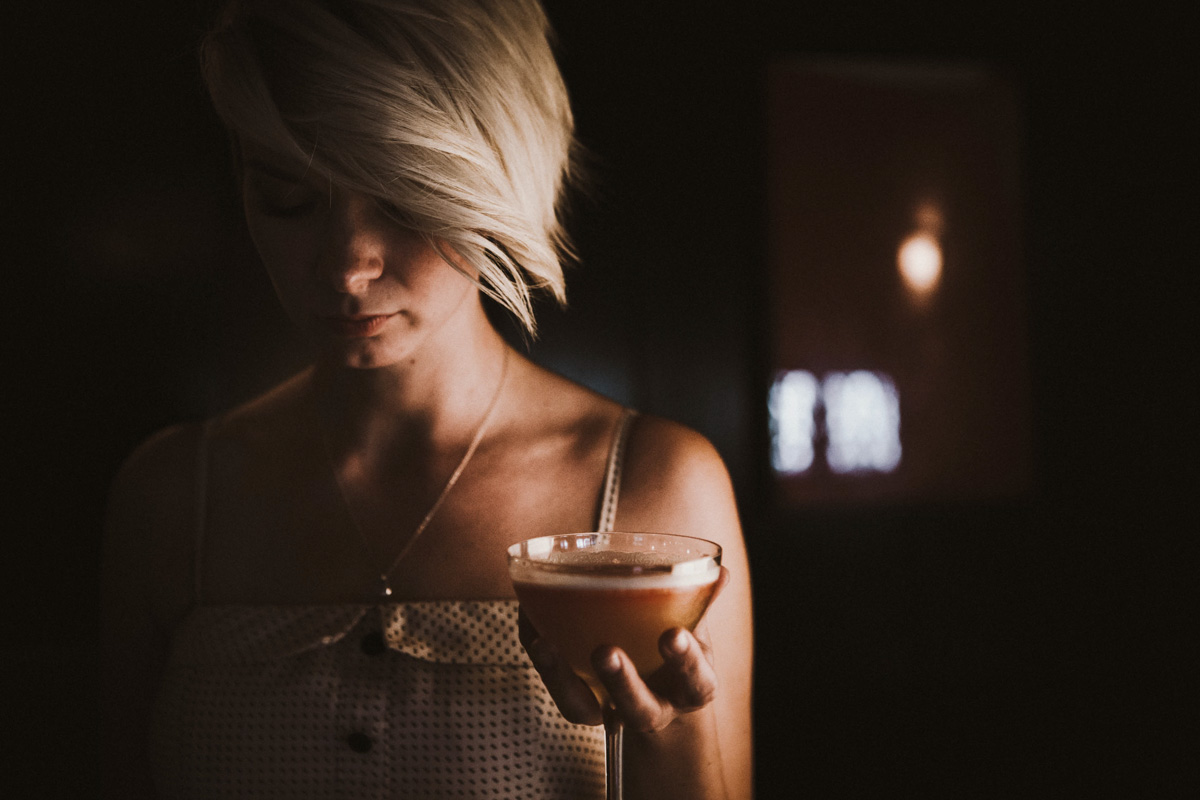
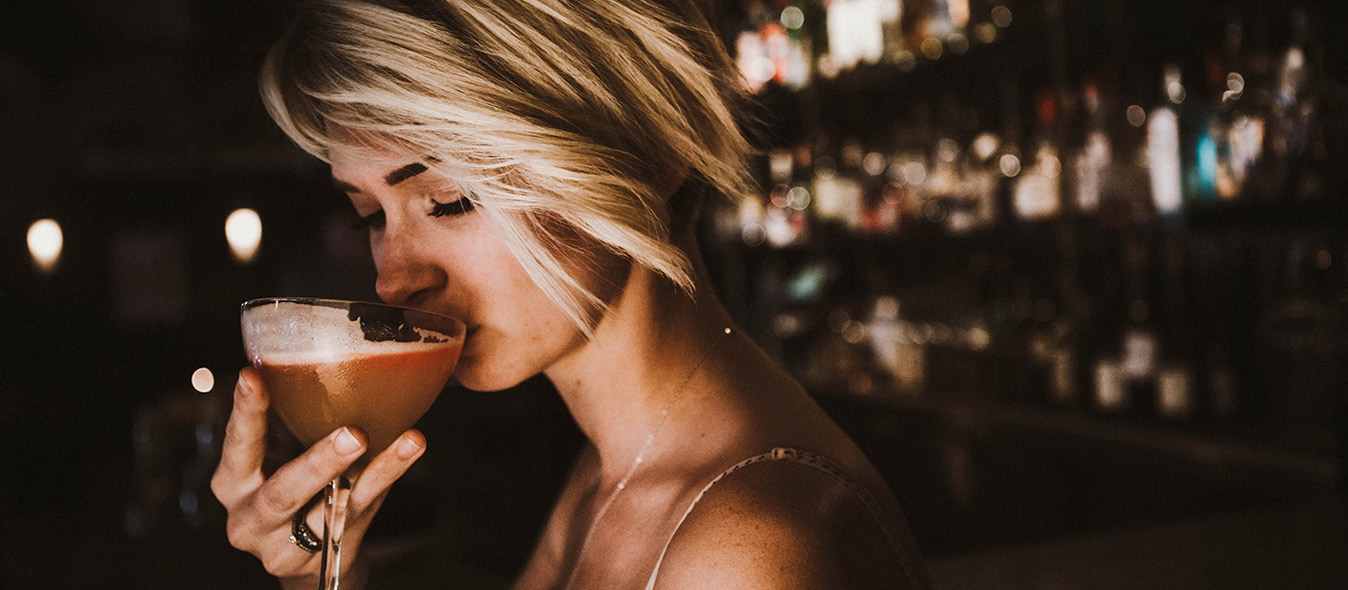
You’re curating how you want your environment to be. Like an artist, you’ve created the ideal place that works for you.
JM: That’s correct. That’s exactly right. That’s what I would be the most proud of. Right from our opening day, we would see one table having a cheeseburger and a single malt, and another table having pancakes and a cappuccino at the same time. That’s when I knew I was proud and it had turned into exactly what I wanted it to.
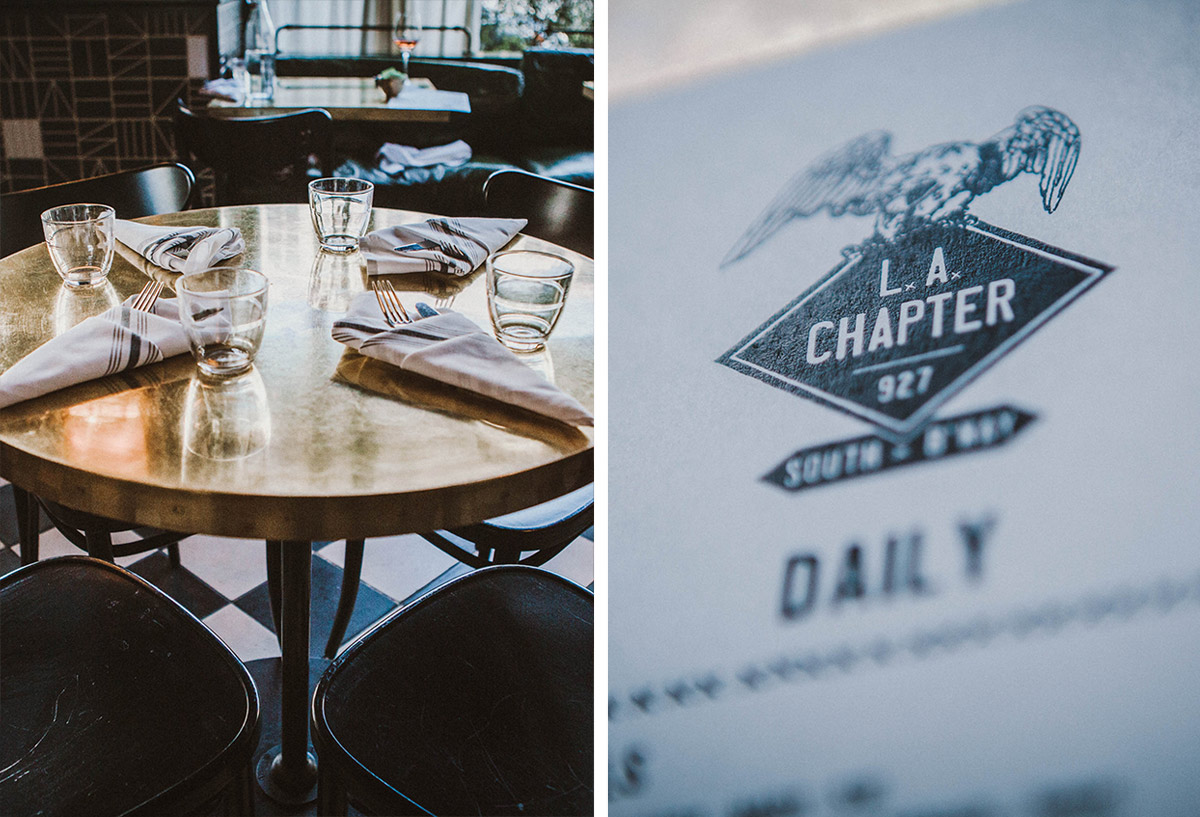
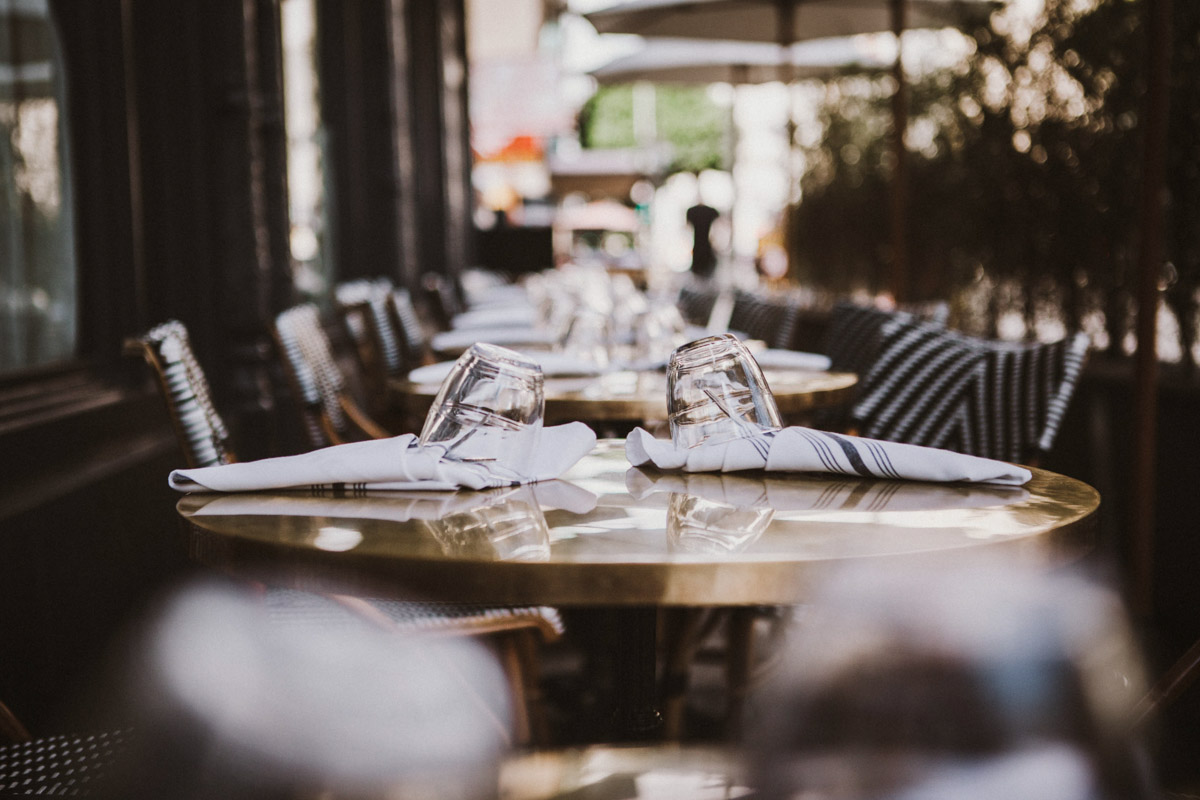
If you look back on your childhood, what is a food-related memory you cherish?
JM: I have two. I remember my dad doing ice carvings, which is not food-related, but it’s chef-related. I remember being a kid and seeing my dad doing ice carvings and thinking that was pretty amazing. And the other one I remember—oddly enough—is a restaurant when I was probably seven years old and the guy had a mohawk. We named him “Mr. Mohawk.” And whenever my parents asked where we wanted to go for dinner, we’d always say Mr. Mohawk’s. Those are my two memories. That was in Seattle.
KA: My mother was an enthusiastic cook, but she wasn’t a great cook. So I don’t feel I was incredibly inspired by that growing up. She definitely cooked, but it wasn’t a part of the culture in our house. I started cooking when I was young. At 15, I started working—very accidentally, just to avoid school, basically—in Thomas Keller’s kitchen. It was a New York restaurant called Raquel. But having never having been exposed to what they were doing there—working with scallops, venison, and fresh produce—it was never a part of the food culture in my house. And I was seeing what the potential was and getting really inspired—by accident. Falling in love with the process and falling in love with the pace and craziness of the kitchen and the pedantic-ness of it. And that was at quite a young age, so it definitely woke me up.
JM: As long as you have someone like Ken in the back and me in the front, and both of us meeting somewhere in the middle, you’re going to be fine.
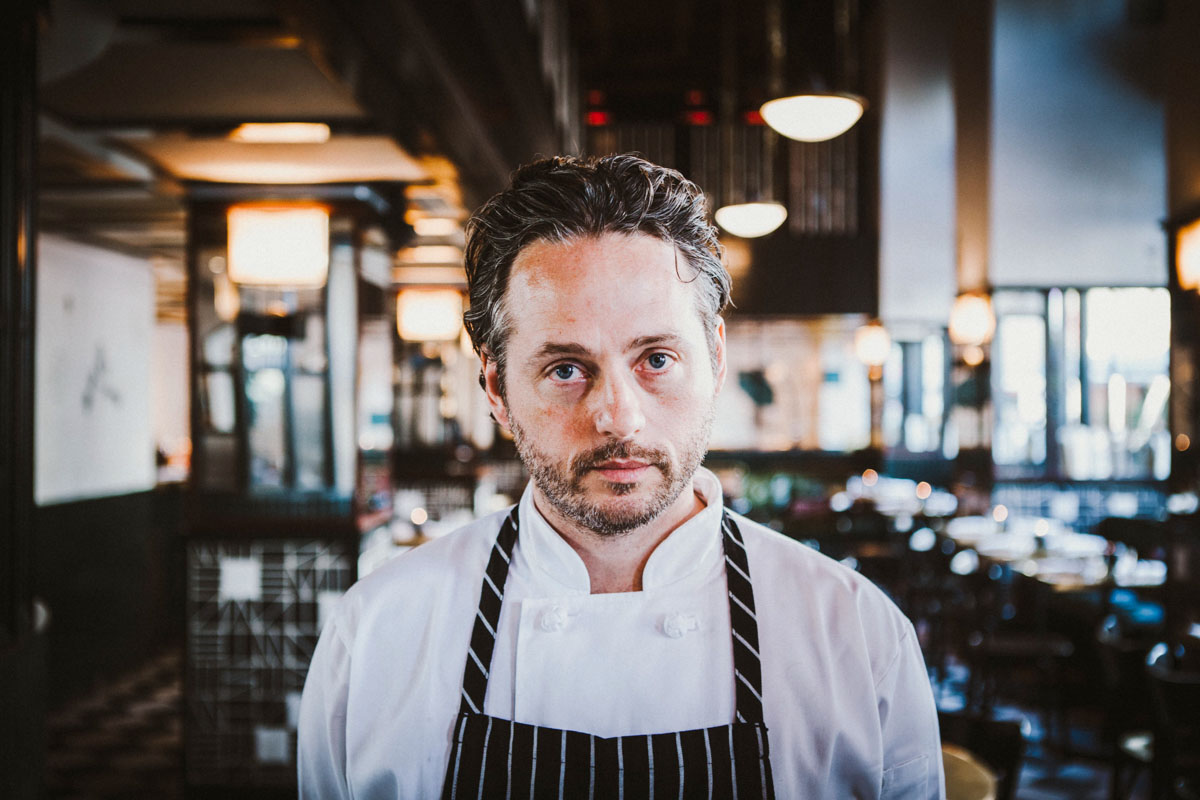
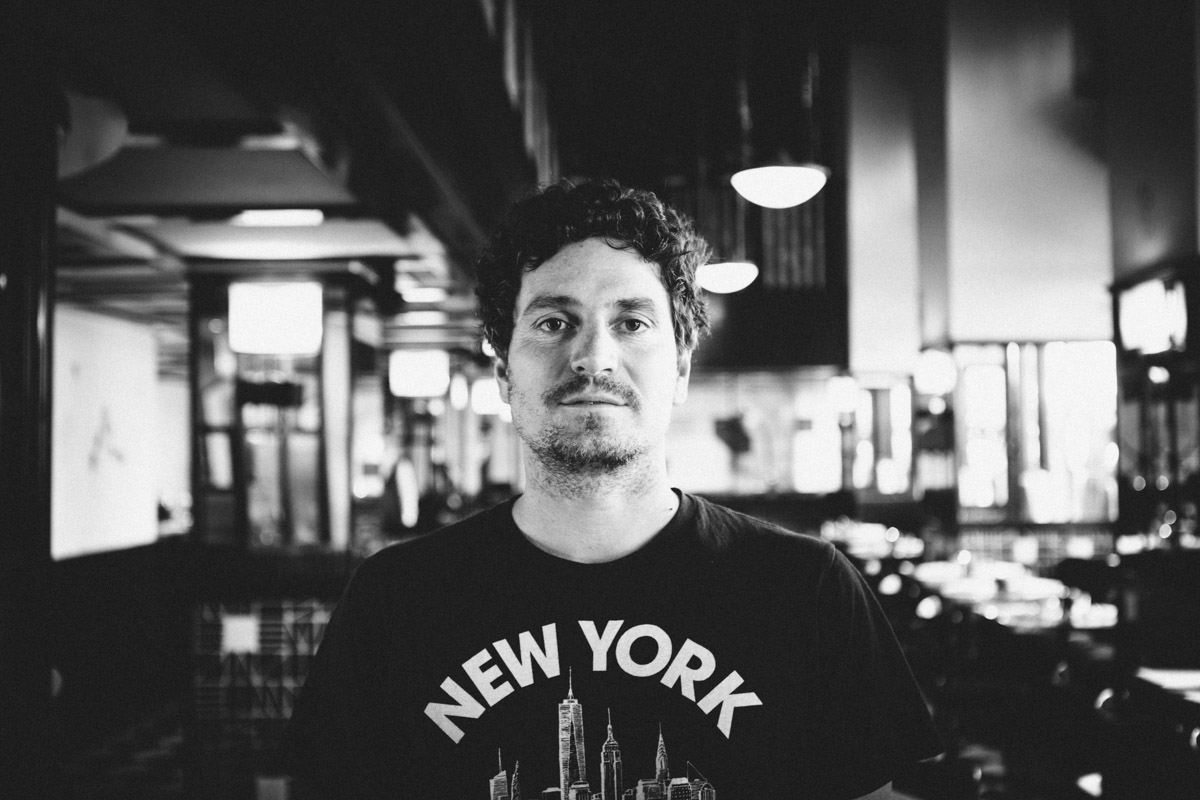
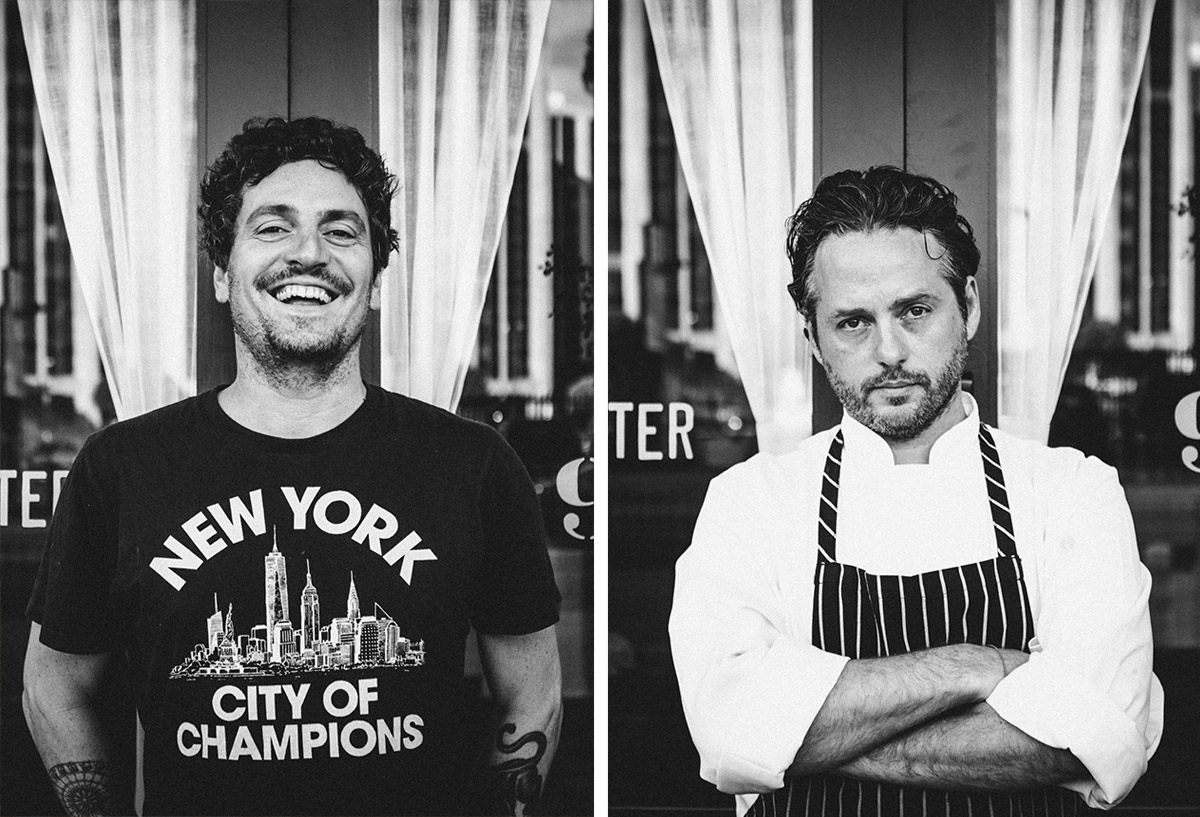
—
Ace Hotel’s L.A. Chapter
929 South Broadway, Los Angeles, CA 90015





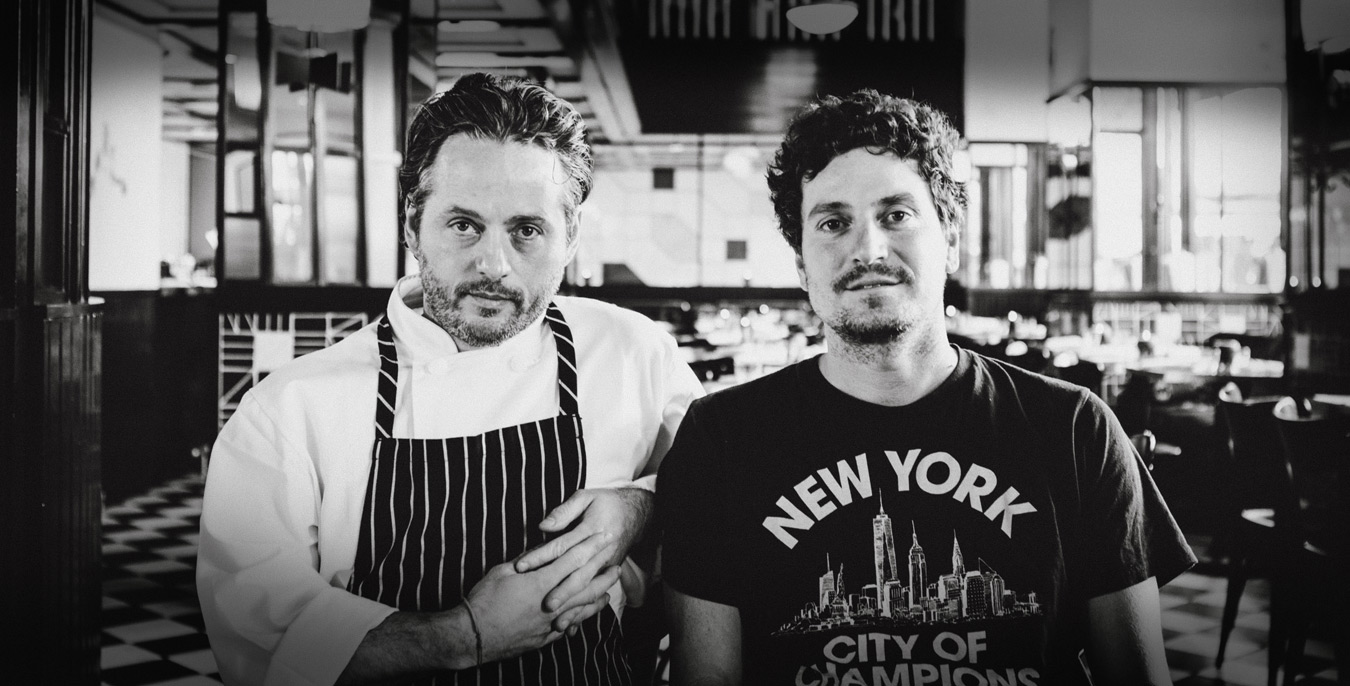

Our comments section is for members only.
Join today to gain exclusive access.